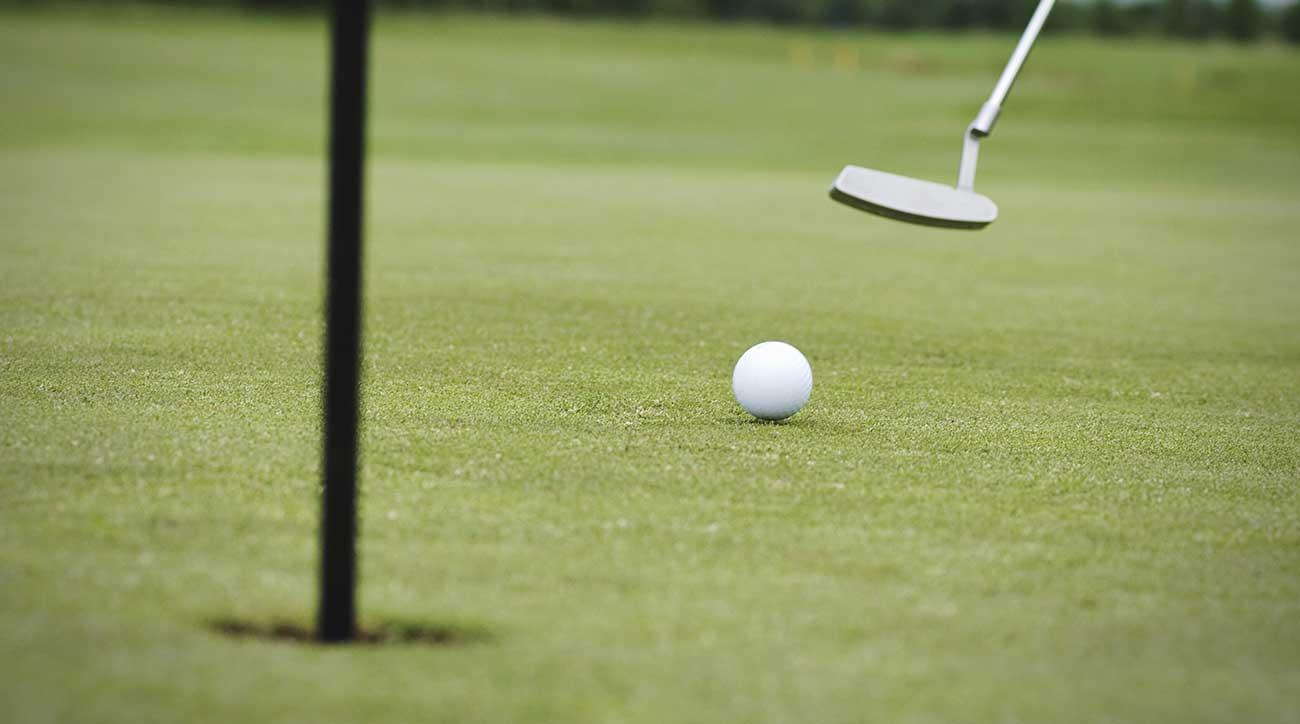The Science of Putting: Enhancing Stroke Consistency
Mastering the art of putting is essential for any golfer, blending physical skill with mental resilience. This article delves into the complex mechanics that govern a successful putting stroke, drawing on extensive research to highlight how grip, stance, and alignment interact to influence performance. We will also explore how visual and sensory feedback contribute to consistent putting while addressing the psychological aspects that come into play during high-pressure situations.
Fundamentals of Putting: Grip, Stance, and Alignment
Three critical elements define effective putting: grip, stance, and alignment. A well-executed grip allows for better control over the clubface during strokes. An appropriate stance provides stability for a smooth swing motion while proper alignment ensures that the ball travels along its intended path.
There are several types of grips used in putting:
- Conventional Grip: The most widely used method where both hands hold the club with palms facing down.
- Claw Grip: A variation where one hand is positioned palm up to enhance control.
- Belly Putter Grip: Involves resting the putter against your stomach for added stability.
Your stance significantly impacts your stroke as well. The two primary stances include:
- Square Stance: Feet shoulder-width apart with toes pointing straight ahead—this is commonly adopted by many golfers.
- Open Stance: Similar foot placement but with toes angled slightly outward to promote a different swing path.
Importance of Visual and Sensory Cues in Achieving Precision
Cues for Visual Alignment
- Create a direct line from your putter head through the ball towards your target line.
- Select visual markers on the green to assist in aligning your putter head accurately with your intended path.
- Cultivate aiming skills through targeted practice sessions focused on trajectory visualization.
Sensory Feedback for Pace Management
- <
- Mantain light pressure on the grip throughout each stroke; this helps ensure consistency without causing erratic movements or speed changes.
- Pays attention to bodily sensations; focus on how you feel as you move through each stroke.
- Diverse distance training can help adjust pace based on proximity to hole.
Synthesizing Visual and Sensory Information
- <
- Picturing desired distance aids coordination between mind and body during strokes.
- Tune sensory feedback from touch against visual cues; this fine-tuning enhances overall performance.
- A comprehensive understanding develops over time through consistent practice linking these elements together effectively.
Optimizing Performance Under Pressure Situations
Maintaining composure when faced with pressure requires an understanding not only of mechanical aspects but also psychological influences affecting performance.
Here are key principles:
-
< li >< strong >Grip , Stance ,and Alignment :< / strong >
- Grip: The foundation of your putting stroke.
- Stance: Creating a stable platform.
- Swing Dynamics: The fluidity of your stroke.
- Slope Assessment: Analyze the uphill, downhill, or flat sections of the green.
- Speed Perception: Gauge how hard to hit the ball based on green speed (varying grass types, weather conditions).
- Visualize the ball’s trajectory based on slope and speed.
- Use a consistent reference point to anticipate the break.
- Develop pre-shot routines to enhance focus.
- Practice visualization techniques to reinforce positive outcomes.
- Improved Consistency: A stable grip, stance, and swing mechanics lead to better results.
- Enhanced Confidence: Understanding the strategies behind successful putting instills confidence.
- Lower Scores: Reducing the number of putts per round directly impacts overall performance.
- Target Practice: Set up targets at various distances to improve accuracy.
- Distance Control: Use alignment aids to focus on controlling ball speed and distance.
- Launch Monitors: Analyze your stroke mechanics and ball performance.
- Putting Mats: Practice indoors for consistent work on your stroke.
- Personalized insights can address individual weaknesses.
- Video analysis can reveal areas for improvement in your mechanics.
- Background: Known for exceptional putting skills.
- Technique:
- Outcome: Consistently ranks among the top in putting statistics.
- Background: Struggled with putting consistency.
- Technique:
- Outcome: Reduced putts per round significantly after adopting holistic techniques.
- Realization: Understanding the biomechanics of my stroke gave me confidence.
- Strategy: Visualizing the ball’s path enhanced my accuracy.
- Enhance accuracy and distance
- Manipulate the ball’s flight
- Manage the course strategically
- Develop a championship mindset
– A stable grip fosters confidence while correct posture ensures accurate impact positioning.
– Focused weight distribution prevents unwanted directional tendencies during swings.
| Pressure Management Techniques | Description |
|—|—|
| Visualization | Envisioning successful outcomes before executing shots |
| Deep Breathing | Utilizing controlled breathing techniques reduces anxiety levels |
| Positive Self-Talk | Reinforcing confidence through encouraging internal dialogue |
| Routine Adherence | Following established pre-shot routines promotes consistency |
The Synergy Between Grip, Stance & Alignment
Each component—grip ,stance,and alignment—plays an integral role in achieving reliable results when putting .A solid connection between golfer’s hands &putter enables precise release at impact .Commonly utilized grips include overlap (index finger overlapping middle finger) which balances firmness without restricting wrist movement .
Stability comes from maintaining proper posture ;feet should be shoulder-width apart while distributing weight evenly across both legs .Alignment involves ensuring clubface points directly toward target upon contact ;ball position varies slightly depending upon handedness (right-handed players typically place it inside their lead foot).
| Element | Description | ||||
|---|---|---|---|---|---|
| Grip | How player holds onto their putter throughout strokes .< / td > | ||||
Achieving consistency within one’s game requires thorough comprehension regarding mechanics involved within every aspect related specifically towards short-game execution .By implementing sound techniques surrounding gripping methods alongside maintaining appropriate postures/alignment golfers can improve overall accuracy leading ultimately towards success out there amongst greens! Furthermore integrating visual/sensory cues enhances precision further still allowing individuals perform optimally even under duress! This exploration has provided valuable insights aimed at refining short games enabling greater reliability across all facets involved!

Mastering the Green: Unlocking the Secrets of Consistent Putting Mechanics
Meta Title:
Master the Art of Putting: Essential Mechanics for Consistency in Golf
Meta Description:
Discover the essential mechanics of putting to improve your game. Learn about grip, stance, stroke dynamics, and cognitive strategies for consistent performance on the green.
Introduction to Putting Mechanics
Putting is a fundamental aspect of golf, making up a significant portion of a player’s overall score. A solid understanding of putting mechanics is crucial for achieving consistent performance. This section explores the core elements that contribute to an effective putting stroke.
Key Elements of Putting Mechanics
– A proper grip maintains control while allowing for subtle adjustments.
- Experiment with different grips (e.g., traditional, claw) to find what feels best.
– Keep your feet shoulder-width apart for balance.
– Position your weight evenly to allow fluid movement during your stroke.
– Focus on a smooth, pendulum-like motion.
– Initiate the stroke with your shoulders rather than your hands to maintain consistency.
Table of Common Grip Styles
| Grip Style | Description | Pros | Cons |
|————–|————————————————-|————————————–|———————————|
| Traditional | Classic grip using all fingers for control | Familiar and widely taught | May lack feel for some players |
| Claw | Thumb positioned down the grip | Enhances touch and control | Can feel unnatural initially |
| Cross-Handed | Left hand lower for right-handed players | Improves line of sight | Difficult to adapt to |
Cognitive Strategies for Enhanced Putting
While mechanical aspects are important, the mental approach plays a crucial role in successful putting. Skilled golfers utilize several cognitive strategies to improve their performance on the green.
1. Green Reading
Understanding the terrain is vital for accurate putting:
2. Break Estimation
Estimating the ball’s path before putting is essential:
3. Mental Focus
Maintaining concentration is key to performance:
Benefits of a Holistic Approach to Putting
Adopting a comprehensive, holistic approach to golf putting can provide various benefits:
Practical Tips for Refining Your Putting Skills
Incorporating practical tips can greatly enhance your putting ability. Here are some actionable insights:
1. Structured Drills
Practice specific drills to reinforce good habits:
2. Use of Technology
Modern tools can aid in refining your technique:
3. Seek Expert Guidance
Consider lessons from a golf professional:
Table of Drills for Improvement
| Drill Name | Purpose | Frequency |
|——————-|—————————————-|——————|
| Target Putting | Improves accuracy | 2-3 times/week |
| Lag Putting | Enhances distance control | 1-2 times/week |
| Break Assessment | Develops green reading skills | Before rounds |
Case Studies of Successful Putters
Examining the practices of successful golfers can provide valuable insights into effective putting strategies.
Case Study: Professional Golfer X
– Utilizes a unique grip for maximum control.
- Focuses on mental preparation before each putt.
Case Study: Amateur Golfer Y
– Implemented structured drills targeting stroke improvement.
– Regularly practiced green reading techniques.
First-Hand Experience: A Golfer’s Perspective
As a dedicated golfer, I embarked on a journey to improve my putting. After implementing various mechanical adjustments and focusing on mental strategies, I noticed a marked improvement in my game.
By sharing experiences like mine, golfers can learn from each other and grow their skills collectively.
Implementing these strategies, techniques, and insights will empower golfers of all levels to enhance their putting performance on the green. A strong foundation in both mechanical and cognitive aspects of putting is essential for success and improvement in the game of golf.
You might be interested in …

Advanced Golf Training Techniques: A Comprehensive Guide to Refined Play
Advanced Golf Training Techniques: A Comprehensive Guide to Refined Play
Master the art of golf with advanced techniques that empower you to control the ball’s trajectory and spin. Learn the skills to read greens like a pro, place tee shots strategically, and navigate the course like a PGA Tour player.
This guide unveils the secrets of expert decision-making, empowering you to make every shot count. Gain insights into the psychology of golf, mastering the mental game that separates champions from amateurs.
Our expert instruction covers all aspects of advanced play, empowering you to:
Elevate your game to the next level with this comprehensive guide, unlocking the refined techniques that will transform you into a skilled and confident golfer.

2024 AIG Women’s Open Saturday tee times, TV coverage: How to watch Round 3
AIG Women’s Open Saturday Tee Times, TV Coverage
The final day of the AIG Women’s Open will be Saturday, August 26 at Walton Heath Golf Club in Surrey, England. Third-round tee times will begin at 7:30 a.m. BST (2:30 a.m. ET).
TV coverage in the U.S. will be on Golf Channel from 7 a.m. to 2 p.m. ET and NBC from 2 p.m. to 6 p.m. ET. In the U.K., Sky Sports will have live coverage from 9 a.m. to 6 p.m. BST.
The third round will be crucial in determining the winner of the AIG Women’s Open. The top players on the leaderboard will be looking to make a move, while those further back will be trying to close the gap.

Examining the Attributes and Achievements of Golf Legends
This article examines the essential attributes of golf legends, including mental resilience, physical prowess, and strategic acumen. Analyzing their notable achievements reveals their significant impact on the sport’s evolution and future trajectory.


